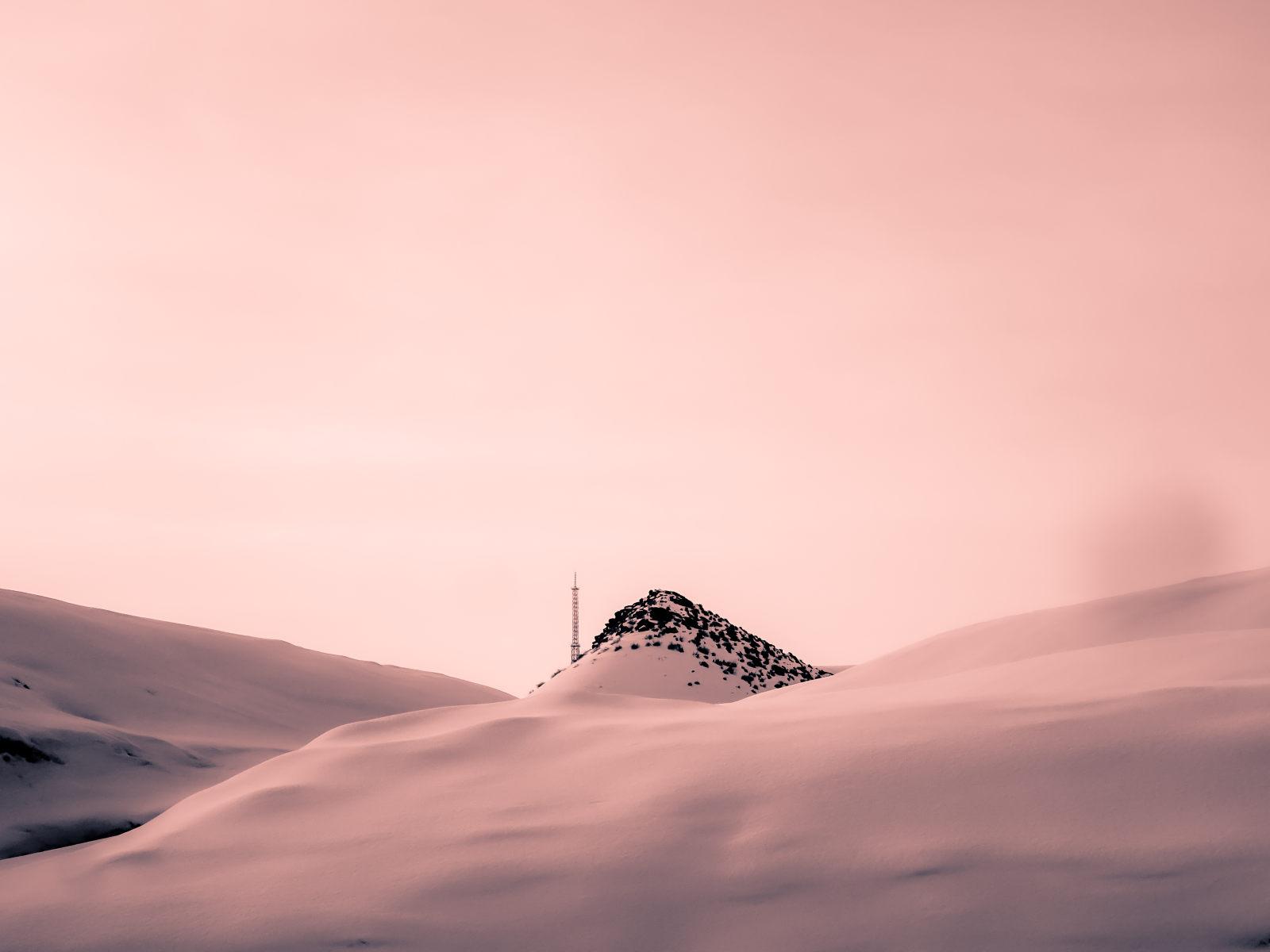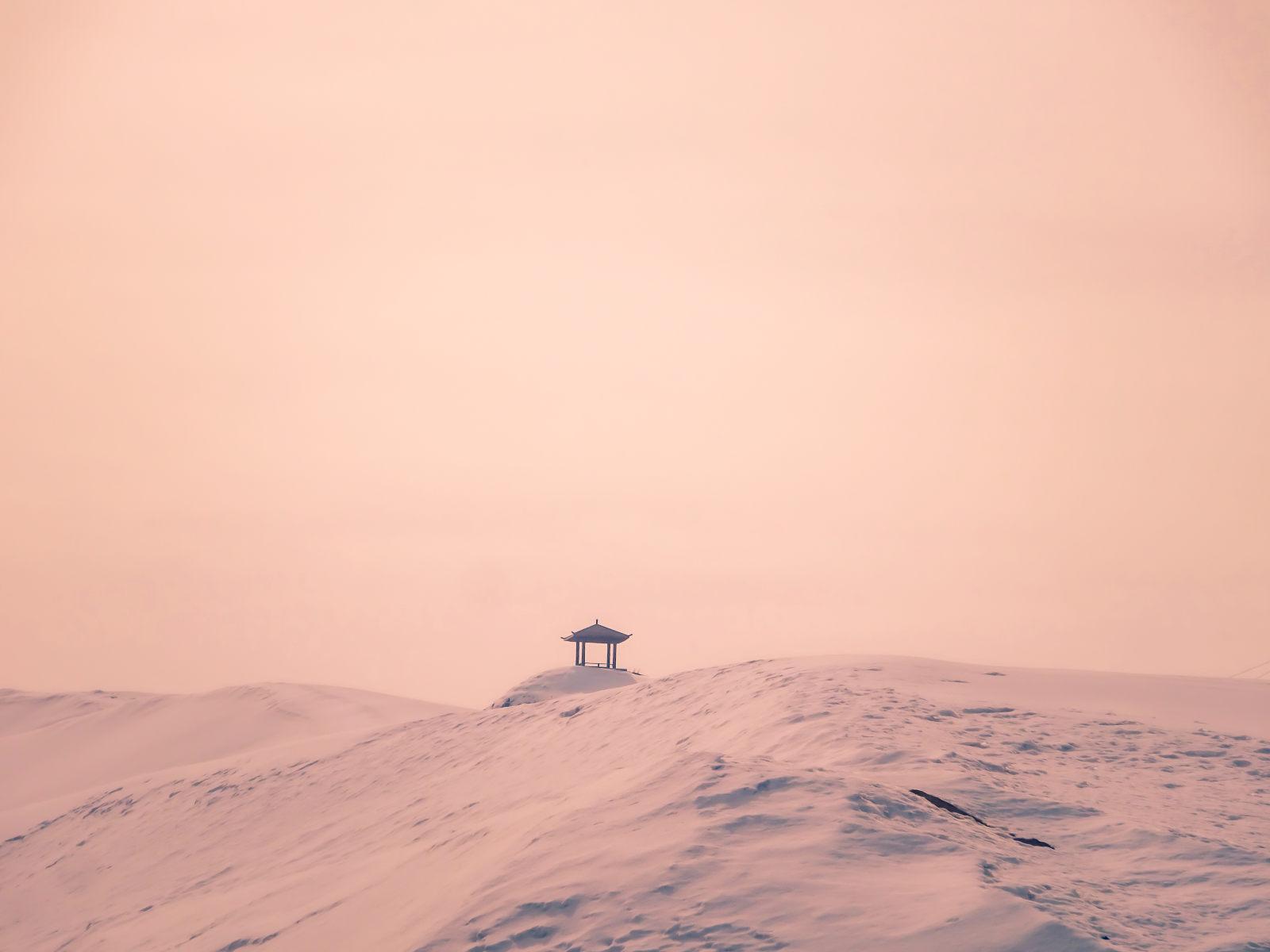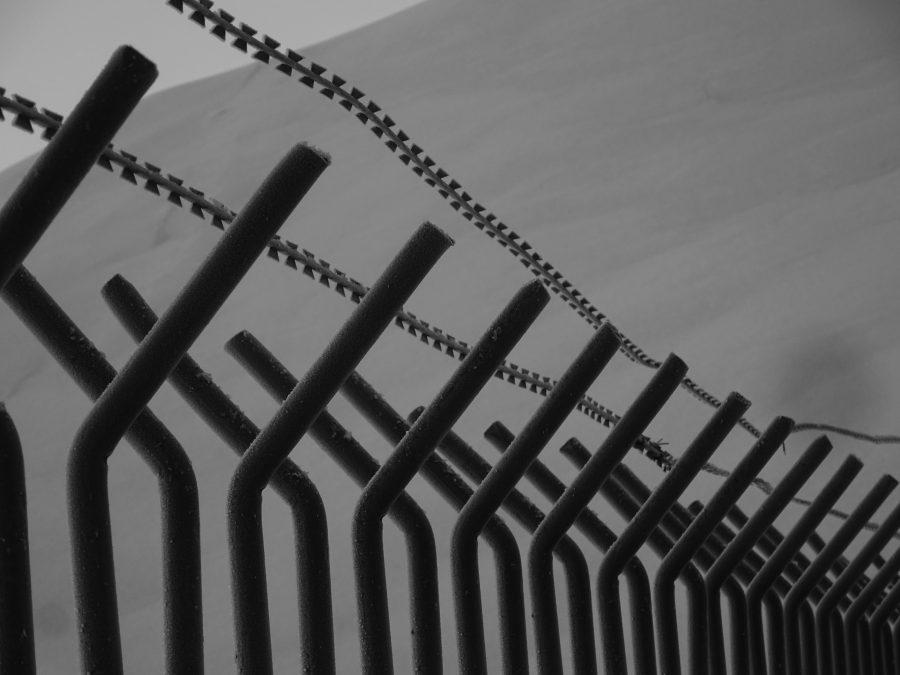The sound of the mountains echoes through the snow, and the buildings lose their color. The lonely traveler is far away, and the traces of their arrival are nowhere to be seen.
- "Rong Xue 2023" by Sion
There are three key factors to consider when photographing in the snow: timing, location, and technique.
Timing#
- "Timing" refers to the balance of yin and yang, cold and hot, and the timing of events.
Generally speaking, the best time to capture snow scenes is on a sunny morning. This allows for the clearest images, as the sunlight reflects off the snow, giving it a more textured appearance. On cloudy days, the clouds can blur the scenery, resulting in less sharp images.


In addition, it's best to have a temperature that is "brisk enough to wake you up." This way, you won't freeze and hinder your movements, nor will you be sweating profusely from running around for the sake of capturing the scenery. Slightly colder weather can also help keep your mind clear and inspire more creativity. Of course, the temperature shouldn't be too high, as the snow needs to remain intact for appreciating the snowscape (obviously). In fact, on such good weather days, not only photographers are eager to go out, but also morning joggers, cyclists, and road trippers. If you're lucky, you might even see horse racing in the outskirts of Urumqi!




Location#
- "Location" refers to distance, difficulty, breadth, and life and death.
Next, consider the location for shooting. It's best to be in a remote area, far from the city (thanks to the people who chose the location for the new campus!). This allows for a more natural and pure landscape. Ideally, choose a slightly higher location to capture the entire snowscape (thanks to the workers who built the road in the middle of the hills and hardened the mud on the roadside).



Technique#
- "Technique" refers to mindset, operation, inspiration, and control.
For photographers, the first step is to use the correct exposure settings. The reflectivity of snow is between 85% and 95%, and on sunny days, the reflection is stronger. It's best to choose a lower ISO value and a higher shutter speed to ensure that the image is not overexposed and to capture the softness of the snow in low light.
Next, try using different angles to increase the diversity of the snowscape. The same subject can have very different effects from different angles. If you're like me, walking and taking photos at the same time, don't forget to look back from time to time.

Lastly, it goes without saying that using post-processing software to adjust colors, improve image clarity, and contrast is essential. I recommend using the built-in gallery editor on Xiaomi devices as well as the Lightroom app (it has powerful features).
Other#
To be honest, I just wanted to share some photos. The article is just a byproduct.
Tower Series#







Streetlights#



Texture Details#


Overpasses#

